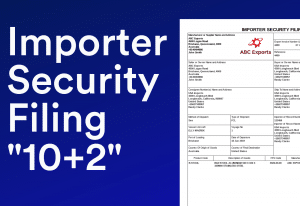Many companies ship goods from China to the US because of the low prices and variety of products available. Platforms like Alibaba and Made-in-China make it simple to find suppliers and compare options. With careful planning, businesses can secure quality products while keeping costs under control.
Shipping from China to the US can come with a few challenges. It’s important to pick the right shipping method, prepare the necessary documents, and plan for delays during busy seasons. Staying on top of these details helps avoid unexpected costs and keeps everything running smoothly.
This article covers the key steps involved in shipping from China to the US. It breaks down shipping options, highlights the required paperwork, and offers strategies to manage costs effectively.
There are also tips for handling seasonal fluctuations and using freight forwarders to simplify the process.
Incoterms
Before continuing it’s important to know incoterms.
Incoterms define the responsibilities between buyers and sellers for costs like shipping, insurance, and customs clearance. These rules are essential when shipping from China to the US because they outline who is responsible for each part of the process. Knowing the correct Incoterm helps avoid confusion and minimizes unexpected fees or delays.
Pro Tip:
Choosing the right Incoterm lets you control expenses and keep shipments on track without unnecessary issues. Learn more about Incoterms to find the best option for your needs.
Ways to Ship From China to US
There are three main shipping methods to ship to the US. Express shipping (priority air freight), air-freight and sea-freight Choosing the right shipping service can make all the difference when importing goods from China. Each offers different delivery times and shipping costs. Below are the main shipping methods for moving goods from China to the USA:
Express Shipping from China to the US (1-5 days)
Express shipping is a quick and reliable option for businesses with urgent shipping needs. It typically delivers packages in 1-5 days, making it ideal for time-sensitive shipments. Carriers like FedEx, UPS, and DHL specialize in express services, ensuring fast customs clearance and smooth delivery. This method is often used during peak seasons or when businesses need to replenish stock quickly.
While express freight is fast, it comes at a higher cost. Rates vary based on package size, weight, and urgency.
To explore current pricing, it’s helpful to check with specific carriers like FedEx or UPS. They provide updated rates and real-time quotes based on package details. The following pages link you to their rates directly.
What is Express Shipping Good For?
Express shipping is ideal for sending sample products, urgent restocks, or high-value goods. It works best when businesses need fast delivery to meet tight deadlines or respond quickly to customer demand. This method ensures shipments arrive safely and on time, minimizing the risk of stock shortages or lost sales.
Advantages of Express Shipping
- Speed: Fast delivery for shipping time, perfect for urgent shipments.
- Reliability: Carriers like FedEx and UPS ensure smooth customs clearance and tracking.
- Convenience: Helps businesses manage peak seasons and respond to sudden demand.
Disadvantages of Express Shipping
- High Cost: Shipping prices are higher compared to air or ocean freight.
- Limited Capacity: Best suited for smaller shipments, not ideal for bulk orders.
- Extra Fees: Surcharges may apply for oversized packages or last-minute bookings.
Air Freight (5-10 days)
Air freight works well for shipments between 400-1200 lbs (180-545 kg). It is not as expensive as express shipping and it is a lot quicker than sea freight.
How Pricing Works
Carriers charge based on both actual weight and volumetric weight, using the higher value to calculate costs. This ensures fair pricing for items that take up more space than their weight suggests.
With a DIM factor of 6000, volumetric weight is calculated as:
Volumetric weight (kg) = (Length × Width × Height) / 6000
For a quick estimate, use the CBM Calculator for Airfreight. It helps you determine shipping costs and prepare for budget planning.
What is Air Shipping Good For?
Air shipping is ideal for shipments that need faster delivery but are not urgent. Products like laptops, tablets, and medical equipment fit well with this option. It also works for high-end clothing and seasonal items, such as holiday decorations or new fashion lines.
Advantages of Air Shipping
- Faster than Ocean Freight: Air shipping delivers in 5-10 days, ideal for time-sensitive shipments.
- Affordable for Medium Loads: Balances speed and cost, making it a practical option for international shipping.
- Lower Risk of Delays: Less impacted by weather compared to ocean freight.
Disadvantages of Air Shipping
- Higher Cost than Ocean Freight: Shipping prices are more expensive than ocean options.
- Limited by Size and Weight: Not suitable for bulky or oversized goods.
- Additional Fees: Costs can rise due to fuel surcharges or handling fees.
Sea Freight (15-30+ days)

Sea freight shipping is perfect for larger shipments that aren’t time sensitive. It offers a cost-effective way to ship cargo from China, but the journey takes longer. This method is ideal when speed is not a priority, allowing you to save on shipping expenses.
You can ship with two main options: Full Container Load (FCL) or Less than Container Load (LCL).
- FCL gives you the entire container for your goods. This option is more secure and cost-efficient for larger loads.
- LCL combines your goods with others in one container. This works well for smaller shipments, though the handling process adds risk.
Pricing varies based on factors like season and oil costs. A 40-ft container from China to the US West Coast can cost anywhere from $1000- $5,000 depending on season and demand. Smaller LCL shipments are typically priced between $30-$40 per cubic meter but can also have wide variations like FCL loads.
What is Sea Freight Good For?
ChatGPT sai
Sea freight is ideal for heavy, bulky shipments like furniture, industrial equipment, or large wholesale orders. It suits businesses that can manage longer delivery times and is provides an efficient way to move large volumes over long distances, helping companies reduce shipping costs.
Advantages of Sea Freight
- Cost-Effective for Bulk Loads: The cost of shipping per unit decreases with larger shipments.
- Flexible Options: Choose between Full Container Load (FCL) and Less than Container Load (LCL) based on shipment size.
- Suitable for Heavy and Large Goods: Sea freight handles oversized shipments that are not feasible for air shipping.
Disadvantages of Sea Freight
- Long Transit Time: Average shipping time ranges from 15 to 30+ days, which may not suit time-sensitive needs.
- Variable Costs: Pricing fluctuates due to fuel surcharges, port fees, and seasonal demand.
- Handling Risks with LCL: LCL shipments increase the chance of damage or delays due to shared container space.
Planning for Seasonal Fluctuations and Peak Periods
Shipping from China to the US can get complicated during holidays like Chinese New Year. Production slows, ports become crowded, and freight services see increased demand. As a result, shipping rates and freight costs rise, and goods take longer to arrive. Preparing early for these periods is key to keeping your shipments on track.
Book shipping slots ahead of time to lock in better prices and avoid last-minute fees. After peak seasons, shipping goods from China becomes smoother with lower costs and faster delivery. When possible, aim to ship your goods during off-peak times to save money and avoid delays.
Consider flexible routes, such as sending goods through West Coast ports and transporting them inland by rail. This can bypass congestion at busier ports, helping your shipments arrive on time. Careful planning ensures you avoid unnecessary delays, keeping freight costs under control while maintaining inventory flow.
Using a Freight Forwarder for importing from China
If companies are too busy to take care of their shipment from China then they can opt-in to use a freight forwarder.
A freight forwarder helps save time by handling every step of the shipping process, from pickup to delivery. They manage paperwork and follow US Customs rules, preventing shipping delays caused by missing documents or compliance issues. Their knowledge keeps things running smoothly so goods can move faster.
Landed Cost: Calculating the Full Expense of Your Shipment
Landed cost is the full expense of getting products from China to the US. It covers every fee involved and helps businesses manage budgets and protect profits. Knowing this prevents surprises and keeps pricing on track.
Components of Landed Cost
- Product Cost: The price you pay to your supplier.
- Freight Fees: Charges for transportation, such as ocean shipping, air freight shipping, or express shipping service.
- Customs Duties and Taxes: Fees imposed by US Customs when goods enter the country.
- Insurance and Brokerage Fees: Costs for cargo insurance and customs brokers to ensure smooth delivery.
Tracking all these costs helps estimate the final shipping cost from China. There might be more costs involved which can be included into the calculation.
Pro Tip: Use our free Landed Cost Calculator to estimate your total expenses and pick the best shipping solution for your needs.
Documentation and US Customs Clearance
Proper documentation is important. US Customs checks these documents to approve your shipment. If any are missing or incorrect, it could lead to delays or extra costs.
Essential Documents for Importing into the US
- Bill of Lading: Confirms what you are shipping and that it is in transit.
- ISF (International Security Filing): Must be submitted before ocean shipments arrive.
- Certificate of Origin: Verifies where the goods were made.
- Commercial Invoice: Lists product details and sale terms.
- Packing List: Shows what is inside each package and its dimensions.
Having all the required paperwork saves time and avoids problems. We provide templates for all these documents.
Packaging Tips to Cut Costs
Cutting shipping costs doesn’t have to be hard. A few simple changes can make a big difference.
Optimizing your packaging helps you avoid those extra dimensional weight fees, especially with air or express shipping. Whenever you can, go with FCL (Full Container Load). It lowers the risk of damage since your goods won’t get handled as much. If you need to ship smaller loads using LCL (Less than Container Load), make sure your packaging can protect your products. Sharing space with other shipments means they’ll need some extra care.
Talk with your suppliers about cutting down on packaging that isn’t needed. This keeps freight and storage costs low while still keeping everything safe.







